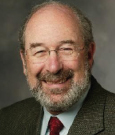A “Featured Topic” session during the 56th American Society of Hematology (ASH) Annual Meeting and Exposition drew a standing-room-only crowd to hear two experts weigh in on checkpoint blockade in hematologic malignancies. While new to hematology, these drugs—the cytotoxic T-lymphocyte–associated protein 4 (CTLA-4) inhibitor ipilimumab (Yervoy) and the programmed cell death protein 1 (PD-1) inhibitors nivolumab (Opdivo) and pembrolizumab (Keytruda)—are already being incorporated into the treatment paradigm of solid tumors.
Stephen Ansell, MD, PhD, Professor of Medicine at the Mayo Clinic, Rochester, Minnesota, described the immunologic state of the intratumoral environment in lymphoma and how its manipulation can be beneficial. Ronald Levy, MD, Professor of Medicine at Stanford University, Palo Alto, California, reviewed studies of these agents presented at the ASH meeting and predicted how these drugs will be clinically applied in hematology.
“I was disappointed that there were only four abstracts altogether in all of hematologic cancers, involving just 130 patients, so there’s still a paucity of data,” Dr. Levy said. “I suspect there will be many more papers at ASH next year.”
Powerful Immune Components
“In lymphoma, there are immunologic barriers present in the intratumoral environment that damp down an effective immune response, and there are potential therapeutic targets to modulate immune function,” Dr. Ansell said.
It has been known for some time that T cells are present in the intratumoral environment, but whether they are beneficial or harmful has not been clear. A greater percentage of CD8-positive T cells or CD4-positive T cells correlate with a lower proliferative rate. However, this does not result in clearance of the tumor. In fact, complete responses are seen in the absence of high T-cell counts.
“Could we activate T cells and produce a more effective immune response?” he asked. “To do so would require overcoming multiple immunologic barriers.”
In short, the lymphoma B cell recruits T regulatory cells to the tumor and ultimately skews the microenvironment in favor of this phenotype. Also present are effector T cells, many of which become “exhausted” and have limited ability to eradicate the tumor. Additionally, many cells express immunosuppressive ligands on their surface. Intratumoral monocytes and follicular dendritic cells are also present. This composition supports the malignant environment, he explained.
Such factors “stack the deck against an effective immune response,” he said. “Understanding these barriers gives opportunities for therapeutic intervention.”
This is what is happening now with the checkpoint inhibitors, which are “taking the brakes off the immune system,” blocking these inhibitory signals and correcting the unfavorable environment for the effector T cells. By overcoming the immunosuppressive events that have limited their ability, the T cells can now target the tumor cell.
Dr. Ansell pronounced immune therapy “the new frontier,” one that “holds real promise” and is “only the beginning of a new wave.”
Activity May Be Limited
“Immunologists have provided us with a plethora of targets,” Dr. Levy agreed. “T cells are being stimulated or inhibited by a variety of interactions on targets against which we now have antibodies.… The future holds an amazing array of new drugs that will unleash the T-cell immune response that’s always been lurking there…. We are already seeing responses, dramatically so, in ways we could not have predicted.”
But Dr. Levy questioned whether these drugs will be potent in hematologic malignancies in general, or whether their benefit may be reserved for a malignancy that is tailor-made for them, Hodgkin lymphoma, where there is increased PD-1 ligand (PD-L1/2) expression.
“Here, we have a perfect situation for PD-1 blockade to work,” he said. “We have a target that is overexpressed by the tumor cells. When we take the brakes off the interaction between the PD-L1 ligand and the T cells, amazing things happen.”
While he called the findings for nivolumab and pembrolizumab in Hodgkin lymphoma “pretty amazing stuff,” he was underwhelmed with the activity of checkpoint blockade in several other hematologic cancers.
For example, in a phase I study of ipilimumab in 13 patients who had disease progression after allogeneic transplant and a median of seven prior therapies, the clinical benefit rate was 36%.1 The one responder had Hodgkin lymphoma. Three with lymphoid malignancies achieved stable disease. The most impressive finding was the lack of acute graft-vs-host disease with this treatment, he said.
“The drug was deemed tolerable and promising, but I don’t think many of us want to manage grade 3 diarrhea. I think ipilimumab is going to be too toxic for me,” he offered.
Similarly, in a phase I study of the PD-1 blocker nivolumab in 54 patients with relapsed/refractory lymphoid malignancies, the overall response rate was 28% in B-cell lymphomas and 17% in T-cell lymphomas.2 There were no responses in multiple myeloma patients.
“If we are looking for an efficacy signal, I don’t think we are blown away by this,” he suggested. “We anxiously await more data from an ongoing phase II study, but at the end of the day, if the phase II efficacy is about the same, this may be great news to the immunologists but not so great to hematologists. We have lots of agents with that degree of efficacy.”
Dr. Ansell, however, seemed more optimistic. He described a study (not presented at ASH) on the PD-1 blocker pidilizumab in 68 patients with diffuse large B-cell lymphoma, progressing after autologous transplant. Disease progression at 16 months was reduced by 28%, meeting the primary endpoint.3
“What was interesting is that a number of high-risk patients had positive positron-emission tomography (PET) scans after transplant, and even they did well (51% response rate), suggesting that blockade of this mechanism is important,” he said.
In another study, pidilizumab was combined with rituximab (Rituxan) in 32 patients with relapsed follicular lymphoma, producing a 66% response rate, including complete responses in 55%.4 “These encouraging responses suggest this might be a very active agent to add to rituximab,” Dr. Ansell said.
Indisputable Activity
The activity was indisputable, however, for nivolumab and pembrolizumab in Hodgkin lymphoma. In a phase I trial of nivolumab in 23 relapsed/refractory Hodgkin lymphoma patients, the objective response rate was 87%, and 17% of them were complete responses.5 “Have you ever seen a waterfall plot where essentially all the water was falling? Contrast this with what we see in non-Hodgkin lymphoma.”
The responses were durable; at 24 weeks, progression-free survival was 86%. Of 10 tumors examined for PD-L1/2 expression, all were amplified. At this point, however, the measurement of ligand expression is imperfect. Whether this can be used to select patients remains unclear.
A similar study of pembrolizumab in 15 patients confirmed the effectiveness of blocking this interaction,6 but Dr. Levy tempered his enthusiasm for the PD-1 inhibitors in Hodgkin lymphoma by pointing out, “If we use PD-1 blockers only in relapsed/refractory patients, that’s a small use of these drugs. How to move this very active regimen up front in competition with all our other treatments, in a disease that we already treat very successfully, will be an interesting challenge.” ■
Disclosure: Dr. Ansell received research funding from Seattle Genetics, Bristol Myers Squibb, and Celldex. Dr. Levy received research funding from Pfzer, Bristol-Myers Squibb, and Pharmacyclics, and is a consultant for Five Prime, Bullet Biotech, Kite Pharma, BeiGene, Immune Design, and Immunocellular Therapeutics.
References
1. Davids MS, et al: ASH Annual Meeting. Abstract 3964. Presented December 8, 2014.
2. Lesokhin AM, et al: ASH Annual Meeting. Abstract 291. Presented December 8, 2014.
3. Armand P, et al: J Clin Oncol 31:4199-4206, 2013.
4. Westin JR, et al: Lancet Oncol 15:69-77, 2014.
5. Armand P, et al: ASH Annual Meeting. Abstract 289. Presented December 8, 2014.
6. Moskowitz CH, et al: ASH Annual Meeting. Abstract 290. Presented December 8, 2014.



